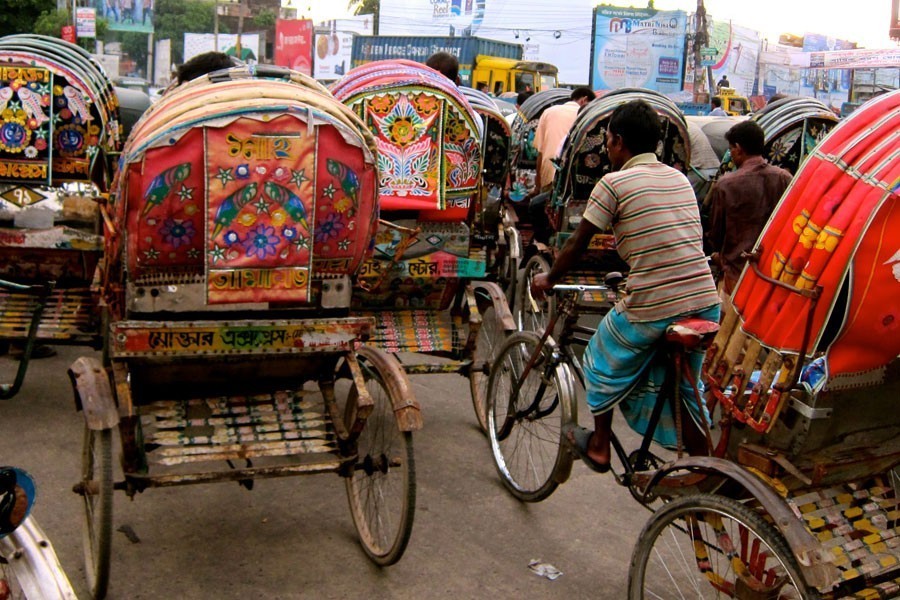The freedom of art lies in its vastness. Art doesn't remain confined to a canvas. It spreads like a drop of water does, superseding all boundaries. Art can draw one's attention even when one is stuck in a traffic jam and utterly bored. Scorching heat of the sun won't irritate when a splash of art is found midway. It surely is a relief in that surrounding when what is by now known as the rickshaw art, ubiquitous as it is on the streets of Bangladesh, especially in Dhaka city, looks appealing. Rickshaw is a colourful vehicle itself and rickshaw art is something that gives an additional vibe to it. It's next to impossible to ignore rickshaws or rickshaw art as these are part of our day-to-day life.
Unfortunately, this form of art is highly undervalued. Compensation for artists is very low. They get a paltry Tk 250 per piece of art. The craftsmen generally learn this art from their ancestors as a tradition. But the tradition is changing--artists are leaving their profession in droves for a better living. Sometimes these artists get tips from foreign tourists who find this form of art very interesting.
Connected with the urban life, it is kind of a ritual for a new rickshaw to get a good art plate. Though it is called rickshaw art, it doesn't belong only to rickshaws. Nowadays, some online shops are recreating rickshaw art on mug, glass bottle, phone cover, wallets and other usable things.
Usually, some familiar film stars are painted on plates, but there is also wildlife, good wishes like 'Maayer Doa' and floral designs. In some cases, the artworks are aggressive in nature. This is because of heightened colour and crude art style.
Rickshaw art was introduced in Bangladesh back in 1919. But it has fluidity and has evolved over decades. Until the 1950s, the artworks were not added to rickshaw. Early rickshaws were plain and boring compared to the present version. During and after the liberation war, this art underwent political transformation. People also used it to tinge with political ideology. Even now, we can see the war scenes on the back of some rickshaw. This is how history left a footprint on this art.
Everything loses its charm over time. Rickshaw and rickshaw art are no exception to this. The roads are now clogged with vehicles and everyone is in a mad rush to feel the splash of colour rickshaw hold before them. Also, a joy ride on a rickshaw with vibrant arts seems to be no more a viable option in a city rated among the dirtiest on the planet.
Rickshaws are still very popular in Bangladesh but are falling behind the pace of modern life. The day may not be far away when this vehicle would be a thing of the past and find a place in the museum. This is also considered a symbol of underdevelopment because of its slow pace. Modernisation and digitisation have offered many new things, altering the people's habits and tastes. Will rickshaws still be there 10 or 20 years from now? As for today, rickshaws with their exotic art are an indispensable sight on the streets of Bangladesh.
The writer is a student at Dhaka University.


